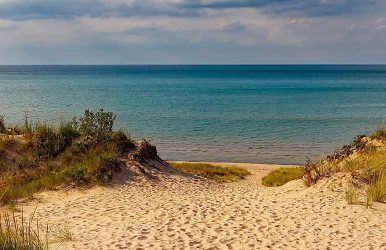Albuquerque Ambiance: Top Hotel Picks For Every Traveler
BY Abdul Aziz Dec 28, 2023
Throughout its 300-year history, Albuquerque has drawn tourists from early Spanish settlers to sun-seeking tuberculosis sanitarium visitors who poured into the city in the 1920s and Route 66 road trippers. Visitors today recognize it as the world's center for hot-air ballooning as well as a popular destination for outdoor recreation. It is where more than forty tap rooms serve craft beer, and the local cuisine consists of spicy red and green chili sauce. Here, we have enlisted the best hotels in Albuquerque for your next trip. These hotels will change your idea about leisure as well as lounging. The variety of accommodations available in Albuquerque matches the diversity of its visitors. There are historic hotels with connections to the local railroad system or a boutique inn rooted in the indigenous culture of the area. Duke City's best hotels have what you're looking for, along with the basic peaceful retreat you may be looking forward to. Best Hotels In Albuquerque Albuquerque is the perfect place to take a year-round vacation due to its moderate, dry climate and more than 300 sunny days per year. Here are the best hotels in Albuquerque. Hotel Chaco Coming up first on the list of best hotels in Albuquerque is Hotel Chaco. The first new hotel in the area in over 40 years, it swung open its black-on-black doors with Avanyu carvings. It is a serpent design that is the symbol of the holiness of water in the high desert. This pattern frequently features in Pueblo pottery designs. It is the focal point of the Sawmill District's metamorphosis from a sleepy industrial hub to a thriving area for dining, lodging, and entertainment. The 118 guest rooms at the hotel have sleek, earthy colors and materials, like sinks carved from petrified wood, that evoke modern Southwest design. Unique Navajo (Diné) rugs from Toadlena Trading Post in northwest New Mexico, where weavers continue centuries-old traditions, adorn each room. El Vado Delirious with nostalgia! Residents of Duke City frequent El Vado to haunt its boutiques and eat tacos prepared by them. The motel attracts travelers seeking to relive their best moments along the Mother Road. Millennials and Gen Z-ers take pictures of its Instagram-worthy vignettes. For example, the Route 66 license plate art piece in the taproom. Before reopening in 2018, the 1937 classic auto motor court hotel underwent careful renovations. It still has the state's signature stepped massing and classic Pueblo Revival architecture. It also has a meticulously restored neon sign that greets visitors in true Route 66 fashion. The hotel pool, which was formerly the parking lot, got an upgrade and now features parking medians. Hotel Parq Central It stands between the city's most popular neighborhoods and offers a peaceful stay along historic Route 66. Hotel Parq Central is a thoughtful reimagination of a 1926 railroad hospital. That place recommends a lot of medical professionals and hospital employees as hotel visitors. The hotel's popular Apothecary Lounge draws locals as well. The building's eligibility for the National Register of Historic Places was maintained by the transformation. The interior railings, staircases, doors, and ceramic tiles of the stone-and-stucco façade are all back to their original splendor. Furthermore, despite being rich in history, it still exudes a warm welcome to modern convenience-seeking tourists. Hotel Albuquerque The reasonably priced Hotel Albuquerque is easily one of the best hotels in Albuquerque. It attracts both branded convention goers on coffee breaks from the hotel's ample meeting spaces and tour-ready sneaker-clad guests, thanks to its recently renovated rooms and convenient location within a block of Old Town, the center of Albuquerque's heritage. The hotel's architecture and décor are influenced by the Spanish founding of the city. It depicts the territorial era and history as a tuberculosis sanitarium hotspot. This is evident in its entry tower, Grand Sala (second-story windows on a cathedral-like lobby), and well-kept gardens. Visit Plaza Don Luis, a more recent addition to the neighborhood, for modern galleries, local wine-tasting rooms, and a new wave of craft breweries. Los Poblanos The 45 guest rooms at Los Poblanos reflect the character of their various locations throughout the property. It is sprawling amidst 25 acres of gardens and organic fields. It is housed in a recently constructed lavender-field adjacent building, which is a 1930s dairy-inspired structure with pitched tin roofs. The Territorial Revival-style hacienda opens to a courtyard fountain. The latter provide breathtaking views of the Sandia Mountains at dusk when they resemble their namesake watermelon. No matter where they are, the rooms exude Southwestern elegance. The Field suites are a hit with families because they have separate kid-friendly bunk rooms, dining areas, and full kitchens. The inn's restaurant, Campo, located in a restored dairy barn, has grown to be a popular choice for both locals and visitors. (Reservations are required in advance; tables fill up several weeks in advance.) Hotel Andaluz Albuquerque Conrad Hilton, a young businessman and native of New Mexico, inaugurated the first establishment in 1939. It was the first hotel he constructed in his home state and his fourth overall. For many years, the high-rise stood as the tallest structure in the state, which is one of the reasons it features in the National Register of Historic Places. Over the years, it changed hands a few times before ending up in the hands of an Albuquerque businessman who combined original elements, such as lobby murals and key slots lining the reception area, with new details inspired by Andalusia. The hotel became a part of Hilton's Curio Collection ten years after it reopened. The location focuses on sustainability. Hotel Andaluz used an impressive energy management system and earned LEED Gold certification during its $30 million renovation. Wrapping Up Known for its fusion of cultures, including the magnificent Rio Grande River and the breathtaking pink Sandia mountains. Hispanic, Native American, Asian, and African influences create a buzzy, vibrant community, Albuquerque, the state's most populous city, is tucked in New Mexico. It is emerging as the next hot spot for foodies due to its flourishing culinary scene. Even so, it's a fantastic starting point for taking in the majesty of the surroundings, with magnificent backdrops. If you have thoughts to share or questions to ask about the best hotels in Albuquerque, then please leave a comment below. We would love to hear from you! Read Also: Ski Retreats And City Suites: Salt Lake City’s Hotel Gems Houston Hospitality: The Top Hotels You Need To Experience Here Are The 25+ Best Hotels In Mexico City That You Must Visit!











